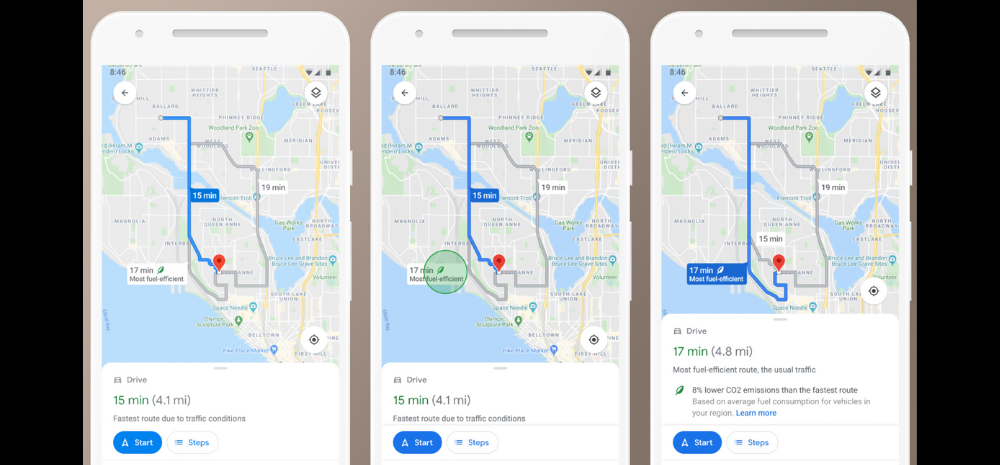Google Maps stands as the go-to navigation application for the majority, continually advancing with new features to enhance user experience. Recently, the search engine giant introduced an update designed to assist commuters in conserving fuel. Currently available in select countries, this feature is anticipated to be rolled out for Indian users soon.

Termed “eco-friendly routing,” it allows commuters to choose alternative routes that are environmentally friendly, reducing their vehicle’s fuel/energy consumption and CO2 emissions.
Optimizing Journeys: Google Maps’ Eco-Friendly Routing for Enhanced Fuel Efficiency
Eco-friendly routing presents fuel or energy-efficiency estimates for various routes based on the vehicle’s engine type. When activated, Google Maps displays both the fastest and the most energy-efficient routes, even if they differ. Conversely, if users opt to deactivate this feature, the app will recommend only the fastest route, disregarding the fuel/energy-efficient alternative.
According to a press note, “The Google Maps app shows fuel or energy-efficiency estimates on some routes based on your vehicle’s engine type. The more fuel or energy-efficient the route, the lower your car’s fuel/energy usage and CO2 emissions.”
Smart Navigation Choices: Google Maps’ AI-Enhanced Fuel-Efficient Routing and Customization Options
Google clarified that fuel-efficient routing employs artificial intelligence (AI) to suggest routes with fewer hills, less traffic, and steady speeds, all while maintaining the same or a similar estimated time of arrival (ETA). In India, the update will extend to include fuel-efficient routes for two-wheelers, promoting sustainable travel.
To activate fuel-efficient routes, users need to open the Google Maps app, tap on the profile picture or initial, navigate to settings, and tap on Navigation settings. Within ‘Route options,’ they can enable “Prefer fuel-efficient routes” for eco-friendly routing. Users then select their engine type, choosing between gas (petrol) or diesel for internal combustion engines, hybrid for hybrid cars, or electric for electric vehicles. The app defaults to petrol if the engine type is not specified, offering alternative fuel-efficient routes based on this assumption.
Google explained, “The most fuel-efficient route suggestion could be different based on the engine type. For example, diesel vehicles’ relative fuel economy advantage is generally greatest in highway driving. Hybrid and electric vehicles tend to provide progressively greater efficiency in stop-and-go city driving and hilly driving environments where they can extensively use and benefit from regenerative braking.”













